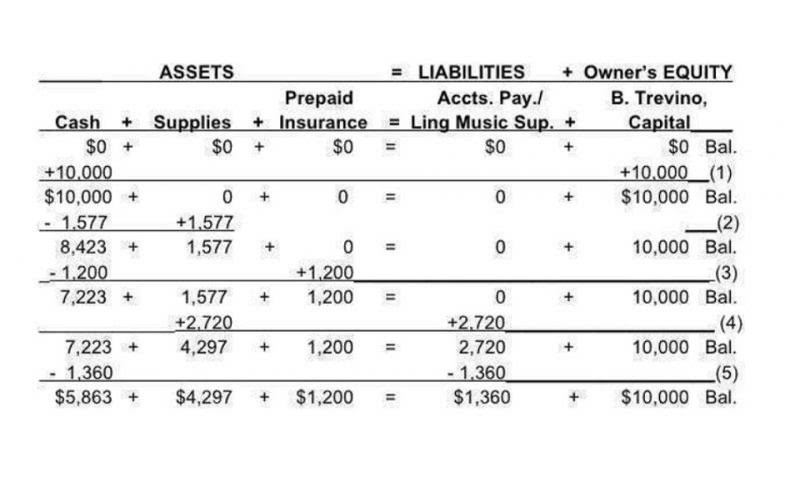Accounts Receivable Turnover Ratio: Formula + Calculator

Intuit does not endorse or approve these products and services, or the opinions of these corporations or organizations or individuals. Intuit accepts no responsibility for the accuracy, legality, or content on these sites. Fine Claim is one of the pioneers in offshore outsourcing services like Medical Coding , Medical Transcription, Medical Billing Insurance Claim processing etc. Always compare your ratio with peers in your sector for more meaningful insights. Let’s go through a real-world example to make the formula easier to understand.
- In financial modeling, the accounts receivable turnover ratio (or turnover days) is an important assumption for driving the balance sheet forecast.
- While it’s beneficial to know the industry averages, remember that the ‘ideal’ ratio isn’t just about numbers; it’s about what works best for your business model and operational framework.
- When you have specific restrictions for those you offer credit to, it helps you avoid customers who aren’t credit-worthy and are more likely to put off paying their debts.
- Additionally, when you know how quickly, on average, customers pay their debts, you can more accurately predict cash flow trends.
- If you aim for those days when sending your invoices, you will likely see payments coming in quicker.
- If a company is too conservative in extending credit, it may lose sales to competitors or incur a sharp drop in sales when the economy slows.
What can accounts receivable turnover ratio tell you?

This content is for information purposes only and should not be considered legal, accounting or tax advice, or a substitute for obtaining such advice specific to your business. No assurance is given that the information is comprehensive in its coverage or that it is suitable in dealing with a customer’s particular situation. Intuit does not have any responsibility for updating or revising any information presented herein. Accordingly, the information provided should not be relied upon as a substitute for independent research. Intuit does not warrant that the material contained herein https://www.bookstime.com/ will continue to be accurate nor that it is completely free of errors when published. Get flexible solutions and real-time data to do everything from managing your money to paying your team.

Receivables Turnover Ratio Calculation Example
- By itself, the ratio doesn’t paint the full picture about an organization and how it is financially managed.
- For instance, consider a theoretical company, ABC Electronics, that manufactures and sells electronic devices.
- Strengthen your AP process with better management strategies—download the AP Survival Guide.
- Strategic action in this area can enhance the accuracy of a business’s balance sheet forecast and potentially reduce bad debt expenses, making the company’s finances more tax-efficient.
- We provide third-party links as a convenience and for informational purposes only.
- After all, selling products or services is great, but you need customers to actually pay their bills to keep the lights on!
By nature, some industries have slower sales cycles and longer payment periods, like construction or manufacturing. Others, like retail or software-as-a-service (SaaS) companies, can expect quicker payments and higher turnover. Thus, businesses should regularly track and monitor this value to assess their collection Accounting Errors practices. This allows them to compare themselves against competitors and determine how well they meet industry standards.
- Typically, people see a higher AR turnover ratio as a positive sign, as it shows the company can promptly collect payments from customers, which implies a healthy cash flow forecast.
- Here, we evaluate their efficiency in managing receivables by comparing their receivable turnover ratios.
- A declining ratio could signify issues with credit policies, customer payment behaviors, or economic factors affecting the industry.
- In most industries, a higher AR turnover ratio is a positive sign, suggesting your company collects payments quickly and maintains a healthy cash flow.
Accounts Receivable Turnover Ratio Formula Explained

Stock research firm CSI Markets published data across several industries in 2022. However, the firm has not disclosed its sampling methods or collection practices. These seasonal variations can skew your AR turnover ratio, making comparing performance across different periods challenging.

To calculate it, divide net credit sales by average accounts receivable. Net credit sales is the revenue generated when a firm sells its goods or services on credit on a given account receivable turnover formula day – the product is sold, but the money will be paid later. To keep track of the cash flow (movement of money), this has to be recorded in the accounting books (bookkeeping is an integral part of healthy business activity). This legal claim that the customers will pay for the product, is called accounts receivables, and related factor describing its efficiency is called the receivables turnover ratio. The ratio quantifies how well a company manages the credit it extends to customers on invoices and how long it takes to collect the outstanding debt. The accounts receivable turnover ratio measures the number of times a company collects AR (on average) throughout the year (or another specific period).
